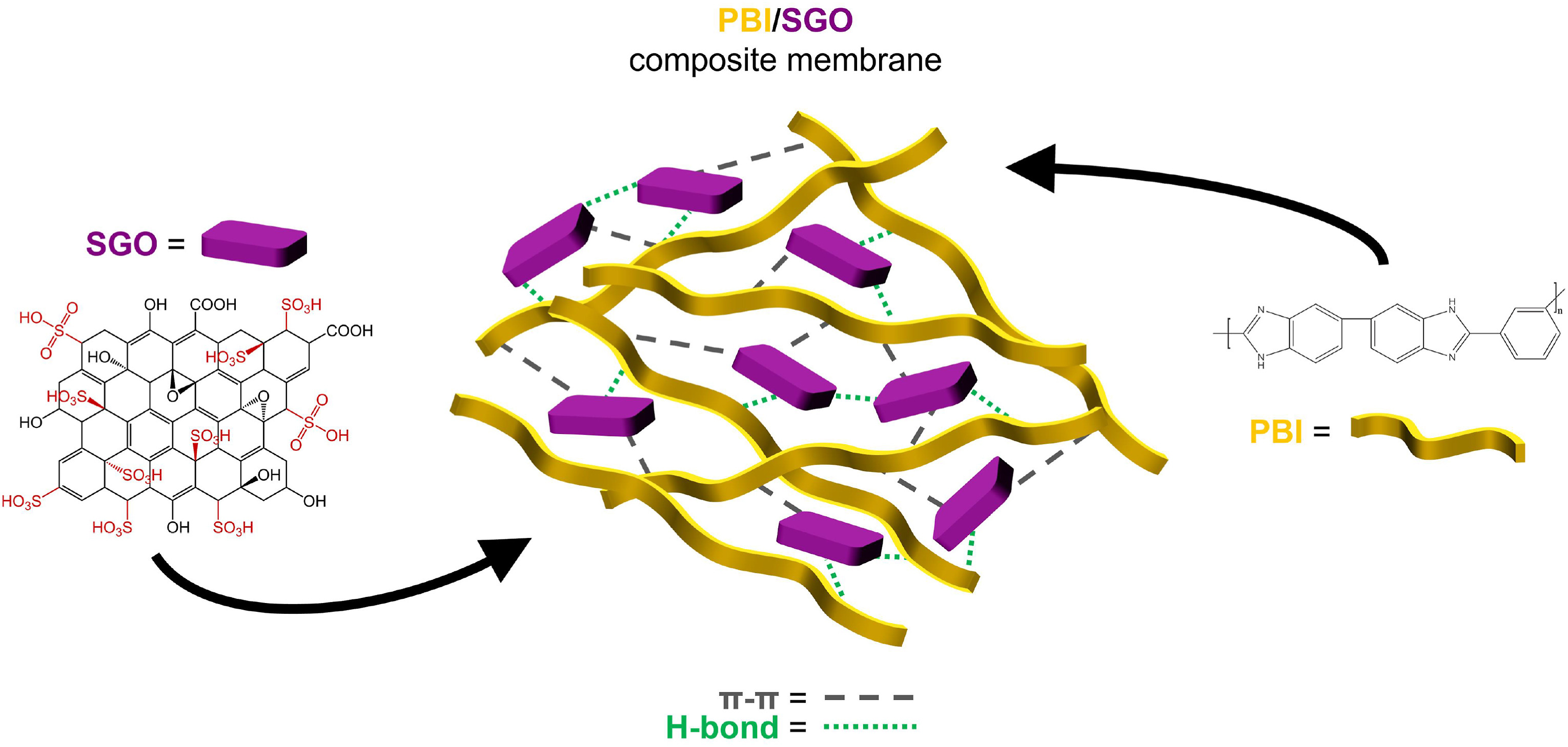M. Di Virgilio, A. Basso Peressut, S. Provato, S. Latorrata
J. Sci. Adv. Mater. Devices, 9 (2024), 100767, 1-12
https://doi.org/10.1016/j.jsamd.2024.100767
The research for non-fluorinated polymeric electrolytes able to operate at temperatures of 80–120 °C, the so-called “conductivity gap”, is becoming central. Within this frame, the present work discusses the investigation of innovative self-assembling polybenzimidazole/sulfonated graphene oxide (PBI/SGO) composite membranes. A set of five samples, characterized by never-explored PBI-to-SGO mass ratios between 3:1 and 1:3, is studied through surface and cross-sectional SEM, XRD, ATR-FTIR spectroscopy, and TGA. The experimental outcomes reveal the reciprocal compatibility between PBI and SGO, whose main features appear to be evenly distributed within the composites. Water immersion tests demonstrate the excellent interplay between the membranes and the aqueous environment. EIS experiments, performed with the in-plane and through-plane configurations, disclose the improvement of the proton transfer ability (σ) in both directions. At 120 °C, PBI/SGO 1:2 achieves the highest in-plane σ of 0.113 S cm−1, while PBI/SGO 1:3 shows the best through-plane σ of 0.025 S cm−1. The preference toward planar proton migration is confirmed by the computation of the anisotropy factor, which is attenuated to ≈0.5 with the aid of temperature. Based on these findings, the composites with large SGO content seem to possess great potential as alternative non-fluorinated proton exchange membranes.

